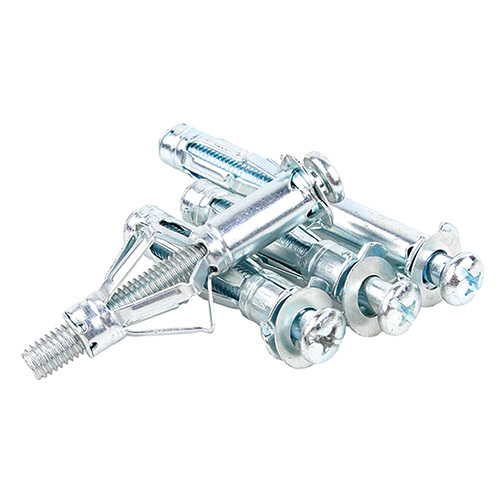Electric Buckle Nuts: A Comprehensive Guide to Specifications and Standards
2025-04-08
Electric Buckle Nuts: A Comprehensive Guide to Specifications and Standards
In the realm of industrial equipment, **electric buckle nuts** stand out as crucial components for ensuring secure connections in various applications. Understanding the specifications and standards associated with these nuts is vital for engineers, manufacturers, and anyone involved in the procurement of industrial fastening solutions. This guide aims to illuminate the intricacies of electric buckle nuts, offering insights into their design, materials, applications, and industry standards.
Table of Contents
- What are Electric Buckle Nuts?
- The Importance of Electric Buckle Nuts in Industrial Applications
- Specifications of Electric Buckle Nuts
- Industry Standards for Electric Buckle Nuts
- Applications of Electric Buckle Nuts
- Installation and Maintenance Best Practices
- Quality Control Measures
- Future Trends in Electric Buckle Nuts
- FAQs
What are Electric Buckle Nuts?
Electric buckle nuts are specialized fasteners designed to provide reliable, electrically conductive connections in various industrial applications. These nuts have unique features that enable them to withstand high temperatures, vibrations, and mechanical stresses, making them ideal for use in electric and electronic equipment. By ensuring a secure connection, electric buckle nuts help maintain the integrity of circuits and prevent failures in critical systems.
The Importance of Electric Buckle Nuts in Industrial Applications
The significance of electric buckle nuts cannot be overstated. They play a vital role in various sectors, including automotive, aerospace, electronics, and renewable energy. In electric vehicles, for instance, these nuts facilitate connections within battery packs and electrical systems, ensuring optimal performance and safety. Likewise, in aerospace applications, electric buckle nuts contribute to the reliability and safety of critical components, such as avionics and actuation systems.
Specifications of Electric Buckle Nuts
Material Specifications
The choice of material for electric buckle nuts is critical for their performance and longevity. Common materials include:
- Stainless Steel: Known for its corrosion resistance and strength, stainless steel is widely used in environments exposed to moisture and chemicals.
- Brass: Offering excellent electrical conductivity, brass is often selected for applications where efficient current transfer is essential.
- Aluminum: Lightweight and resistant to corrosion, aluminum buckle nuts are favored in applications where weight reduction is a priority.
Size and Dimensions
Electric buckle nuts come in various sizes and dimensions to accommodate different applications. Standard sizes are typically defined by their thread diameter and pitch. It's essential to select the right size to ensure proper fit and function. When considering size, also factor in the **thread type**, which can significantly affect the nut's load-bearing capacity and performance.
Mechanical Properties
Mechanical properties, such as tensile strength, yield strength, and hardness, are crucial for determining the suitability of electric buckle nuts for specific applications. For instance, higher tensile strength is necessary for applications subjected to significant loads or vibrations. Understanding these properties helps in selecting the appropriate buckle nuts for optimal performance and safety.
Industry Standards for Electric Buckle Nuts
Electric buckle nuts must comply with various industry standards to ensure their reliability and safety. These standards typically address aspects like material quality, dimensions, and performance characteristics. Some common standards include:
- ISO 898-1: This standard specifies the mechanical properties of fasteners made of carbon steel and alloy steel.
- ASTM F593: This standard covers the requirements for stainless steel nuts, ensuring they meet specific strength and corrosion resistance criteria.
- SAE J478: A standard that outlines the material properties and testing methods for electric buckle nuts used in automotive applications.
Applications of Electric Buckle Nuts
Electric buckle nuts find applications across various industries, each with its unique requirements. Some notable applications include:
- Automotive Industry: Used in electrical harnesses and battery connections, ensuring secure and conductive joints.
- Aerospace Sector: Employed in avionics and flight control systems, where reliability is paramount.
- Renewable Energy: Found in solar panel assemblies and wind turbines, where they help connect electrical components efficiently.
- Consumer Electronics: Utilized in devices such as computers and smartphones, where compact and reliable connections are essential.
Installation and Maintenance Best Practices
Proper installation and maintenance of electric buckle nuts are critical for ensuring their longevity and effectiveness. Here are some best practices:
- Torque Specifications: Always adhere to the manufacturer's torque specifications to prevent over-tightening or under-tightening.
- Cleanliness: Ensure that the mating surfaces are clean and free of contaminants before installation.
- Regular Inspections: Conduct periodic inspections to check for signs of wear or corrosion, particularly in harsh environments.
Quality Control Measures
Implementing robust quality control measures is essential for ensuring the performance and reliability of electric buckle nuts. Some effective measures include:
- Material Testing: Perform tests to verify that materials meet specified standards for strength and corrosion resistance.
- Dimensional Checks: Regularly measure dimensions to ensure compliance with design specifications.
- Performance Testing: Conduct tests under simulated conditions to evaluate the nuts' performance in real-world applications.
Future Trends in Electric Buckle Nuts
The future of electric buckle nuts is shaped by ongoing advancements in materials science and manufacturing technologies. Anticipated trends include:
- Smart Fasteners: Integration of sensors within buckle nuts to monitor performance and detect failures in real-time.
- Advanced Materials: Development of new materials that offer enhanced properties, such as lightweight composites and corrosion-resistant alloys.
- Automation in Manufacturing: Greater use of automation to improve precision and reduce production costs, making high-quality electric buckle nuts more accessible.
FAQs
1. What is the primary function of electric buckle nuts?
Electric buckle nuts primarily serve to create secure electrical connections in various industrial applications, ensuring reliable current flow and mechanical stability.
2. How do I choose the right size of electric buckle nut?
Choosing the right size involves considering the thread diameter, pitch, and the specific requirements of your application. Always refer to the manufacturer's specifications for the best fit.
3. Are electric buckle nuts resistant to corrosion?
Many electric buckle nuts are made from materials like stainless steel or brass, which offer good corrosion resistance. Always check the material specifications for your specific application.
4. How do I ensure proper installation of electric buckle nuts?
Follow the manufacturer's torque specifications, clean mating surfaces before installation, and conduct regular inspections to ensure optimal performance.
5. What standards should electric buckle nuts comply with?
Electric buckle nuts should comply with industry standards such as ISO 898-1 and ASTM F593, which outline material quality and performance characteristics.
Conclusion
Electric buckle nuts play an indispensable role in modern industrial applications, facilitating secure and reliable connections essential for optimal performance. Understanding their specifications, industry standards, and best practices for installation and maintenance is crucial for anyone involved in their selection and use. As technology advances, the future of electric buckle nuts promises exciting innovations that will continue to enhance their functionality and applicability across various sectors. By staying informed about these developments, professionals can make better decisions that ensure the reliability and safety of their applications.
Keywords:
Hot Products
Related news
2025-05-02
Understanding Lock Washers with Double Knurling: Enhancing Fastener Performance
2025-04-29
Why Choose Lock Washers with Double Knurling for Your Next Project?
2025-04-26










